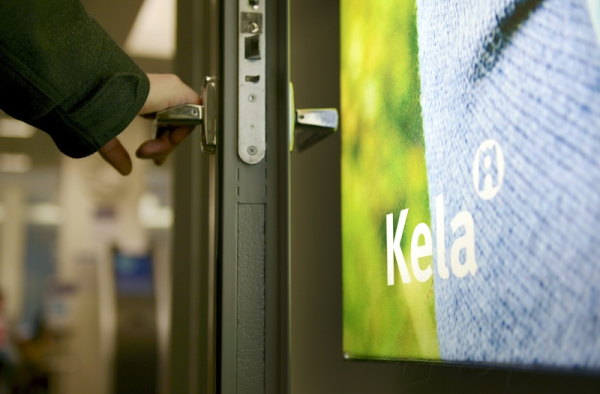
Kela’s Kamppi service point in Helsinki. LEHTIKUVA
- Next Article Record number of Finnish reservists ready for Ukraine peacekeeping
The cost of basic social assistance in Finland rose significantly in 2024, despite the number of recipient households remaining nearly unchanged from the previous year. The increase of €95 million in expenditures is largely attributed to cuts in social security benefits and an increase in recipients who have fled the war in Ukraine, according to a Kela researcher.
Kela paid a total of €825 million in basic social assistance in 2024, up from €730 million the previous year. Inflation-adjusted figures confirm the increase.
A total of 249,576 households received support during the year, only about 1,000 fewer than in 2023. However, the number of people living in supported households rose by approximately 1,000.
Overall, about six percent of Finland’s population—more than one in twenty people—lived in a household receiving basic social assistance.
“Contrary to expectations, the total number of recipient households did not increase in 2024, despite cuts to primary social security benefits. However, by the end of the year, the number of recipients had begun to grow noticeably,” said Tuija Korpela, a researcher at Kela.
The state and municipalities typically share the cost of basic social assistance. Expenses in this jointly funded system increased by nearly €25 million in 2024. During the first three months of the year, spending was lower than in the same period in 2023, but from April onwards, monthly costs exceeded those of the previous year.
On average, Kela paid €528 per month per supported household. The monthly sum increased by 10 percent—nearly €50—compared to 2023, reaching its highest level since the first year of the COVID-19 pandemic in 2020.
“Social security cuts led to higher support payments for households that were already receiving basic social assistance,” Korpela said.
The state fully funds assistance for refugees and individuals granted temporary protection. The cost of this segment of support increased by nearly €71 million in 2024.
“An increasing number of Ukrainians who fled the war were granted a Finnish municipality of residence, making them eligible for basic social assistance. This has contributed to the rise in state-funded assistance costs,” Korpela explained.
By the final months of 2024, the increase in expenses was greater in the jointly funded social assistance program than in the state-funded segment.
Of the households receiving basic social assistance, more than 155,000—or 62 percent—were single-person households. An additional 36,000 recipients were individuals living in shared households, such as adult children living with their parents or people with roommates. Around 12,000 were couples.
Among recipient households, nearly 46,000 were families with children. Of these, 28,000 were single-parent households and 18,000 had two parents.
“Single-adult households are generally in a more vulnerable financial position than others. This is reflected in social assistance statistics, where single-person households are the largest group of recipients, and single parents are clearly overrepresented,” Korpela noted.
The number of single-person households receiving assistance was the only category that declined from the previous year. The number of supported recipients increased in shared households, couples, and families with children.
HT
- Next Article Record number of Finnish reservists ready for Ukraine peacekeeping
Source: www.helsinkitimes.fi
